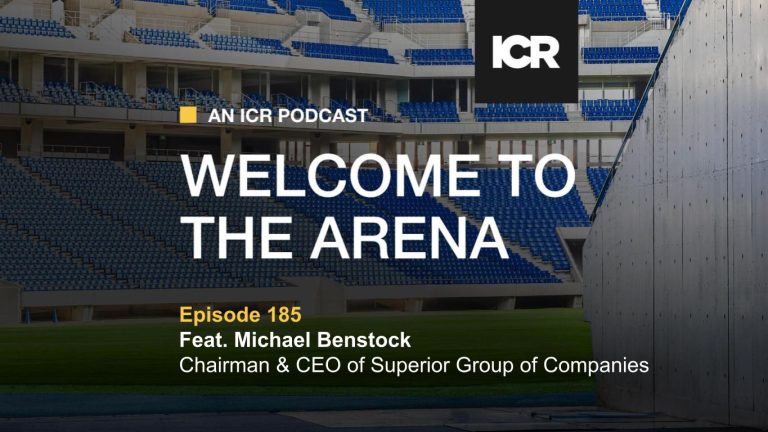Introduction
Planning and executing a productive, efficient and effective IR outreach program is one of the primary responsibilities of the Investor Relations team at any corporation. Based on our collective experience with our clients ranging from smaller cap companies with one or two covering analysts to larger cap companies with twenty-five or more analysts, combined with direct feedback from the many institutional investors we deal with on a daily basis, we have developed the following recommendations that constitute best practices when it comes to building an IR Calendar for the year.
Considerations
The first step in developing the calendar is to establish key goals – both for the upcoming year as well as longer term. You also need to determine how much time management will have to commit to marketing. It is important to balance your investment profile with your investor targeting and outreach to ensure that your goals are realistic. As your investment profile evolves so too will your shareholder base, but this can take time. The same is true if one of the goals of the marketing program is to gain further sell-side coverage. While you may not be able to immediately gauge the effectiveness of your outreach, it is important to define the objectives of the program so that the specific activity in which you engage is geared towards accomplishing them.
Type of Activity
When developing the near- and long-term goals for your investor outreach program, you should consider what the optimal mix of non-deal roadshows (“NDRs”), conference participation, group meetings at headquarters, and stores or facility tours is. Is an Analyst Day necessary? How often should you do one? In general NDRs are the most productive use of time for management teams to spend out of the office. This is due to the fact that often these meetings, conducted at the investment managers’ offices, are attended by key investment decision makers – potentially including multiple portfolio managers responsible for different funds at the same firm. Conferences are also an important activity to consider for your IR calendar. One advantage to participating in a conference is the ability to webcast your presentation as well as meet a number of shareholders and prospects in one location. Since most NDR’s and conferences take place in major cities, they can be augmented by separate meetings with targeted sell-side analysts or with smaller group lunches or dinners that make a trip even more productive. To round out your calendar, you can also add group meetings at headquarters throughout the year. This is less of a time commitment for management teams given they do not have to travel, but does require higher commitment from investors who have to make the trip to your offices. To make the trip worthwhile for the investor group you can consider adding on a store or facility tour to the in-house meeting. Finally, when reviewing your objectives and goals, you should consider any need there may be for an Analyst Day event. While it’s not necessary to do one every year or even every two years, moments in a company’s timeline where a new investment thesis has evolved, or a new management team with an updated point of view has joined the company, warrant an Investor or Analyst Day. This day typically runs for at least four hours, so when considering this option, you must commit to filling this time with productive content for the audience. These events can be worthwhile if held at the right time for a company, but they require a significant amount of time, commitment and resources, all of which should be considered and planned for at least six months in advance of the event.
Volume of Activity
Now that you have established your goals and the types of activities you should consider, next you must determine the appropriate level of activity. How much is too much? You want to strike that balance of making sure you are out there meeting with shareholders and potential investors so that your investment proposition is well understood, but not overdo it such that executives are over-exposed or spending too much time away from operating the business. Often management teams maximize their time out of the office by planning investor marketing around other business commitments in the area. In general, at least two conferences, two to four NDRs and a handful of investor meetings at headquarters in any given year is a perfectly acceptable volume of activity and this can be flexed up, or down, as circumstances warrant.
Timing of Activity
When, ideally, should this activity take place? Right after reporting quarterly earnings is ideal timing to be out on the road. This minimizes the likelihood of inadvertent signaling or misinterpretation of messages late in any given quarter. It also gives you the opportunity to emphasize or clarify key messages coming out of an earnings release, which is especially impactful when webcasting a presentation. You want to try to avoid end of quarter or post quarter-end Street interaction; and if timing is awkward, strongly consider the merits of a pre-release. Investors can be very unforgiving of management teams who are out there delivering bullish messages, and talking up the company’s prospects, only to turn around and deliver a disappointment when they report earnings just weeks after these meetings.
Who should represent your company?
Given the demands on their time, management teams need to prioritize running the business while balancing this priority with an optimal level of interaction with the investment community. As important as it is to determine events in which to participate, it is equally important to consider which members of the management team should participate. While CEOs and CFOs are typical company representatives in most cases, there are other options that could make sense. For larger companies with deep bench strength, leveraging executives like the President, COO, or in the case of a retailer the Head of Stores or Chief Merchant for example, for conference attendance (accompanied by the IRO and/or CFO) is often a good option. Not only does it relieve the burden on the CEO and CFO, but it also helps showcase the breadth of talent at the organization, something that can serve companies well when navigating situations like C-suite departures. The CEO should still participate in one to two conferences and at least one NDR a year to maintain engagement with shareholders and prospective investors, as should the CFO. For a smaller cap or newly public company, the CEO should participate along with the CFO as long as schedules permit. This allows for investors to continue to get to know the management team and helps build trust and credibility.
Where should you travel?
As you are planning travel schedules for the year it is important to consider where management teams will get “the most bang for their buck.” All management teams should focus at least one trip per year to New York City and Boston as these are the epi-centers for assets under management. Beyond these two major cities, you should also review where your current shareholder base and target shareholder base is located: for some companies the Mid-West is an important region, while for others the West Coast and/or Texas is more important. Some management teams target European markets with their outreach. These companies typically have a larger presence overseas and/or have significant ownership based in the region. There are a few unique characteristics of European investors that should be considered when potentially adding this region to the travel schedule. First, the obvious time commitment given the travel required. Unless you focus solely on London, the smaller European investor markets are more spread out and will require more days of travel in order to meet with funds managing a similar level of assets as a tertiary North American city. Second, European investors are also, on average, more long term focused than the average North American investor and often expect to see management teams consistently over the years making this a recurring commitment. Finally, European investors do not have to file their holdings as regularly as they do in North America. Given this, you are unable to track your progress and gauge the effectiveness of your European marketing activities as easily.
Role of your sell-side analysts?
Finally, it is important to discuss the role of your sell-side analysts in your investor outreach. This is an evolving landscape with the MiFID II regulation, but it is more important now than ever, particularly for smaller companies with limited analyst coverage, to ensure they are providing their covering analysts with adequate access opportunities. If you are a larger cap, over-followed company, then it is impossible to accommodate requests for access from every covering analyst. Try to be methodical and somewhat transparent in your approach – e.g. no more than one access event every two years or whatever the appropriate cadence is. Are you an under-covered smaller cap company? Then offer up access simply to broaden exposure while accepting that resulting analyst coverage is not a reasonable expectation. As you focus your outreach efforts on the buy-side, it is important to maintain and strengthen your relationship with the sell-side – even the ones with a “Sell” rating. It’s not always personal, and it is sometimes appropriate to engage with the bearish analyst via an in-person 1×1 meeting. You have nothing to hide and it is entirely possible that the bearish analyst gains appreciation for some part of the story they did not fully appreciate. This could even potentially lead to a rating change; which, with a “Sell” rating, can only mean an upgrade!
Conclusion
The key to an effective annual IR plan is to recognize that there is no standard template to follow. Each company is unique and at a different stage of maturation with a different set of investment considerations. Establish your goals and then build a plan that best accomplishes them while balancing the considerations that we have outlined.



